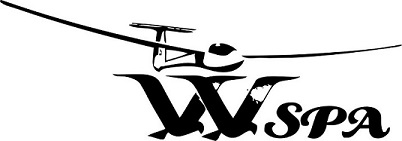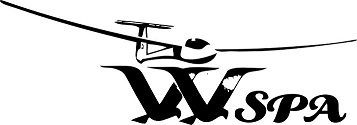Written By Ishitha Arekapudi, WSPA Youth Representative
If you had told me a few years ago that I’d be here today, writing this article, licensed as both a glider and airplane pilot, I probably would have laughed. Not because I didn’t believe in my dreams, but because I thought I had a lot more time to achieve them. At 14, I made a very serious decision: I was going to become an astronaut. But back then, I had this wild idea that I wouldn’t even get close to flying until I was at least 30. You know, an “adult” thing. Little did I know, I was wrong. Very wrong.
You see, it wasn’t that I grew up obsessed with space. In fact, the whole idea of being an astronaut didn’t really occur to me until the sixth grade. It didn’t come from watching rocket launches or growing up with stories of astronauts on the moon. No, my passion for space came from an unexpected place — a middle school talk I attended unintentionally.
To give you a little background, I was born and raised in Ireland. Until I was 12, space exploration wasn’t exactly a common topic of conversation there. It wasn’t like I had grown up surrounded by a culture of aerospace or people talking about the next big thing in space science. But then, everything changed when my family moved to Seattle. Suddenly, I was thrust into an environment where aerospace seemed to be everywhere. It was in conversations at school, in the news, and even in the air. Quite literally, I found myself in a place where aviation and aerospace weren’t just dreams — they were goals people actively pursued.
But it was at my school’s Science Olympiad meeting where everything really clicked. I had originally gone to explore a completely different interest — astrophysics. At the time, I thought that was my path. But as fate would have it, the meeting that day featured a guest speaker: Erika Wagner, a Blue Origin Payload Specialist. She was incredible. She spoke about her journey, how she had originally wanted to be an astrophysicist, much like I did. But like her, I realized during that talk that I wanted more than to just study space from the ground. I wanted to be involved in the action, to go beyond studying it and actually experience space for myself.
That moment became a turning point. I walked away from that meeting with a very clear decision: I was going to become an astronaut. It was far from the expectations my parents had for me, and I had no connections, no background, and no idea where to even begin. But what I did have was the determination to make it happen.
And once I set that goal for myself, there was no going back. The only problem was, I didn’t want to wait until I was in college to get started. The thought of waiting felt unbearable. I wanted to dive into the world of aviation and space as soon as possible. And that’s when I had this idea: What if I became a pilot? In my mind, that was the most logical step to take if I wanted to get closer to space.
At 14, I figured that becoming a pilot was the perfect pathway into the world of aviation. But there was one small problem — I had convinced myself that I wouldn’t even be able to fly until I was in my 30s. I don’t know where that idea came from, but I was so sure that flying was something reserved for “adults.” It felt like something that was so far off, something I’d have to wait a lifetime to achieve. And the idea of waiting… well, that was just unbearable.
Then, during one of my many late-night internet deep dives, I stumbled upon something that changed everything: the Experimental Aircraft Association. Through my mentor I had met during my first ever general aviation airplane ride, I learnt something about gliders I couldn’t forget. And that’s when I realized I didn’t have to wait until I was 30 to fly. I didn’t even have to wait until I was 18. I could start right then and there — at 14. Two weeks later, I saw in the cockpit of a glider and began my lessons.
Learning that gliders were accessible at such a young age was like unlocking a door I never knew existed. It felt like I had been handed the keys to a world I’d only dreamed of. And from that point forward, everything began to fall into place. I had my direction, and I wasn’t going to let anything stop me from pursuing it.
So, I began my glider training. And let me tell you, it wasn’t always easy. I started waking up at 5 a.m. every day to head to the airfield. Some mornings, I found myself scraping ice off the wings of the glider just to get ready for a flight. And while I wish I could say that every single morning led to soaring through the sky, that wasn’t always the case. Some days, the weather just wouldn’t cooperate. But it didn’t matter — every single moment, even the frustrating ones, was a step closer to my dream.
It was during this time that I really began to understand what it meant to love something so deeply. Flying became more than just a step on the path to becoming an astronaut — it became a passion in and of itself. The feeling of being in the air, the freedom, the control, the connection between pilot and aircraft — it was exhilarating. And it was in those quiet moments of flight, with nothing but the sound of the wind and the glide of the wings, that I realized this was something I would carry with me for the rest of my life.
In 2022, everything changed again. That year, I was fortunate enough to receive the SkyGhost Scholarship from the Women’s Soaring Pilots Association. This $1,500 scholarship made it possible for me to get my glider license, something that would have been nearly impossible for me to afford otherwise. The SkyGhost Scholarship wasn’t just about covering the costs of flight training — it was about opening doors to opportunities I never thought I’d have access to. It was the key that allowed me to fully immerse myself in the world of soaring, and it gave me the confidence to keep pushing forward.
Getting my glider license was a monumental achievement for me. It wasn’t just a piece of paper — it was a symbol of everything I had worked for up to that point. It represented the early mornings, the hard work, the determination, and the passion that had driven me from the moment I realized I didn’t have to wait until I was 30 to fly.
And of course, once I had that license, I couldn’t stop there. Gliders were just the beginning. With my newfound experience, I began transitioning into powered planes. The shift from gliders to powered flight was an exhilarating experience. Every takeoff in a powered plane felt like I was getting one step closer to my ultimate goal of reaching space. The sky was no longer the limit — it was just the starting point.
But along this journey, I realized something even more important: my passion for aviation wasn’t just about my own dreams. It was about opening doors for others, just like WSPA had done for me. And that’s when I decided to pay it forward.
I founded an organization called Sky Riders, a national aerospace and aviation nonprofit for youth. The goal of Sky Riders is to break down the barriers that prevent young people from accessing opportunities in aviation and aerospace, much like the ones I faced. Through Sky Riders, I’ve been able to help young people find their own paths in the world of aviation. Watching others discover their passion for flying, seeing the spark in their eyes when they take to the sky for the first time — it’s been one of the most rewarding experiences of my life.
For me, this journey isn’t just about becoming an astronaut anymore. It’s about showing others that they too can follow their dreams, no matter how impossible they may seem at first. It’s about helping others realize that the sky isn’t the limit — it’s just the beginning.
In my upcoming book, Cleared for Takeoff, I share my journey navigating the challenges and triumphs of pursuing a career in aviation, specifically designed for teens eager to embark on their own paths in this dynamic field. Throughout the narrative, I interweave my personal experiences with practical resources, scholarships, and essential information that aspiring aviators will find invaluable. My goal is to empower young readers by demonstrating that their dreams are achievable, regardless of their backgrounds. By illustrating how each journey begins with a single decision and a leap of faith into the unknown, I aim to inspire the next generation of aviation enthusiasts to recognize that the sky is merely the beginning of extraordinary possibilities.
Now, as I stand here, reflecting on everything that’s happened, I can’t help but feel incredibly grateful for the support I’ve received along the way. Organizations like the Women’s Soaring Pilots Association have been instrumental in making my dreams a reality. The SkyGhost Scholarship wasn’t just financial support — it was a vote of confidence. It showed me that others believed in my dream, even when I was still figuring it all out.
And that’s why I want to say a special thank you to WSPA for making my dreams come true. Without your support, I might still be dreaming of flight rather than living it. The SkyGhost Scholarship didn’t just cover the costs of my glider training — it opened doors to a world I never thought would be possible for someone like me at such a young age. Your organization has empowered me to pursue my passion for aviation and inspired me to help others follow their own dreams. The impact of your work reaches far beyond scholarships and seminars; it creates pilots, dreamers, and future explorers.
As I continue on this journey, I’m more determined than ever to keep pushing the boundaries of what’s possible. The road to becoming an astronaut is long and challenging, but with each flight, with each experience, I know I’m getting closer to my goal.
In closing, I want to leave you with something I love about aviation: the path to the stars isn’t just for those who come from the “right” backgrounds or have all the connections. It’s for anyone with the drive to pursue their dreams. Sometimes, the hardest part is just figuring out where to start. For me, it was realizing I didn’t need to be 30 to fly. And now, I can’t wait to see how far this journey will take me — and others — in the future.

